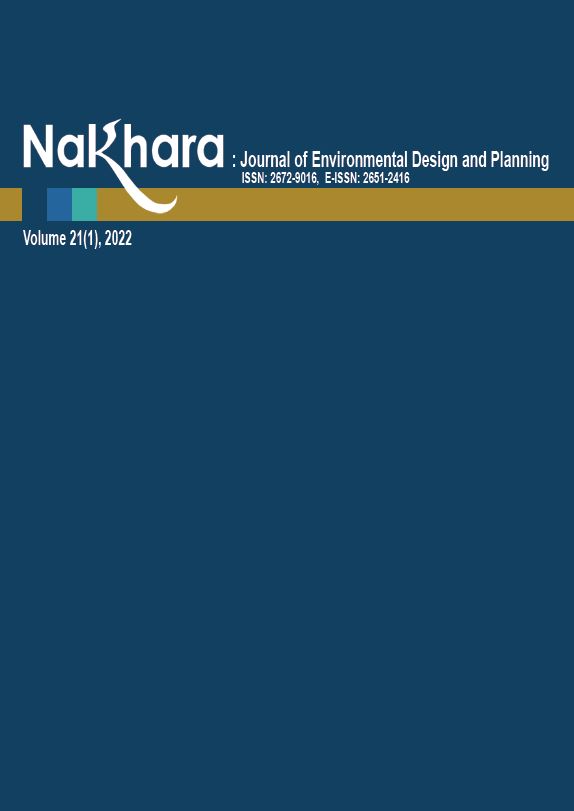Conflicts in Managing Chiang Mai’s Abandoned Monasteries
Main Article Content
Abstract
In Chiang Mai’s old town district, there are many monasteries that are still standing, some ‘living’ and some abandoned. These abandoned monasteries stand in the modern environment without any direct policymaking from the official stakeholders concerning their upkeep or protection. In this way, the remains of abandoned sacred places face a hostile environment and their survival is threatened. Each place is used in various ways, such as being utilized for government offices, being used as sacred places of elementary schools, or existing among poor communities; some are in the process of being revitalized. Most of the problems they face involve local people and how long-term management of these locations can be secured. This study intends to elucidate the 2006 procedure of the Thai government Fine Arts Department (FAD) with respect to the ten abandoned monasteries of old town Chiang Mai.
Chiang Mai’s authenticity and cultural identity are crucial. People’s understanding and interpretation about these key aspects of the city fluctuate and depend on the different ‘goals’ of the stakeholders. Seeking to understand Chiang Mai’s true identity might be for a key factor in sustainable development of not only in tourism, but also the lives of local residents, and cultural heritage protection.
Article Details

This work is licensed under a Creative Commons Attribution-NonCommercial-NoDerivatives 4.0 International License.
References
Akagawa, N. & Tiamsoon, S. (2005, October 17-21). ‘Setting’ in cultural heritage conservation in Thailand. 15th ICOMOS General Assembly and International Symposium: ‘Monuments and sites in their setting - conserving cultural heritage in changing townscapes and landscapes’, Xi'an, China.
Charoenmuang, D. A. (2006) Sustainable city in Chiang Mai: A case of a city in a valley. Institution of Social Research.
Charoenwongsa, P. (1995). Authenticity: Does it really matter much? In N. E. Larsen (Ed.), Nara Conference on Authenticity in relation to the World Heritage Convention, November 1-6, 1994, Nara, Japan, Tapir Publishers.
Ditsakul, S. (1995). Preservation policy for Thai architectural heritage. Art & Culture, 17(3), 108.
Droste, B.V. & Bertilsson, U. (1995). Authenticity and World Heritage. In N. E. Larsen (Ed.), Nara Conference on Authenticity in relation to the World Heritage Convention, November 1-6, 1994, Nara, Japan (p.14), Tapir Publishers.
Dumrikul, S. (1986). Ideas for Chiang Mai Historical City Conservation: the Chiang Mai City Walls, Report of Occasional Celebration of Tha Pha Gate on 13 April 1986.
Fine Arts Department. (1961). Act on Ancient Monuments, Antiques, Objects of Art and National Museums 1961, AsianLII. http://www.asianlii.org/th/legis/consol_act/aoamaooaanm1961650/
Fine Arts Department. (1989). Theory and conservation guideline for monument and site. Fine Art Department.
Genovese, R. A. (2005). The cultural heritage age for the man. 15th ICOMOS General Assembly and International Symposium: ‘Monuments and sites in their setting - conserving cultural heritage in changing townscapes and landscapes’, Xi'an, China. http://www.international.icomos.org/xian2005/ papers.htm
Hanilton, M. B. (1995). The sociology conserving of religion. Routledge.
Jokilehto, J. (1995). Authenticity: A general framework for the concept. In. N. E. Larsen (Ed.). The Nara Conference on Authenticity in relation to the World Heritage Convention, November 1-6, 1994, Nara, Japan, Tapir Publishers.
Kanchanakom, P. (1991). The Fine Arts Department: Conservation or destruction. Art & Culture. 12(11), 85.
Laos PDR (Ministry of Information and Culture) and Chiang Mai University (Fine art Department) (1994). Report of conference workshop: Conservation of Luang Prabang and Chiang Mai, Chiang Mai University, Chiang Mai.
Panyananta Bhikkhu. (n.d.). Truth of life. Dhamma-sapha.
Peleggi, M. (2002). The politics of ruins and the business of nostalgia. White Lotus.
Satayanurak, S. (2007). Kukrit kap praditthakam khwāmpen Thai lem sō̜ng yuk čhō̜mphon Sarit thưng thotsawat sō̜ngphanhārō̜isāmsip [Kukrit and the invention of “Thai-ness”2: Period of the Field Marshal Sarit to 1987]. Matichon Press.
Suksawadee, S. (1996). Study of the conservational problems in ancient monument and temples in Chiang Mai. Office of Research Fund.
Tambiah, S.J. (1984). The Buddhist saints of the forest and the cult of amulets, Cambridge: Cambridge University Press, in Byrne, D. (1995). Buddhist Stupa and Thai Social Practice. World Archaeology, Buddhist Archeology, 207(2), 266-281.
Tangcharoun, W. (2004). Conservation, city development and ancient monument. Matichon, 25(1268), 22.
Tianprasert, T. (1999). Ruin monument and conservation. Department Thai Art, Chiang Mai.

